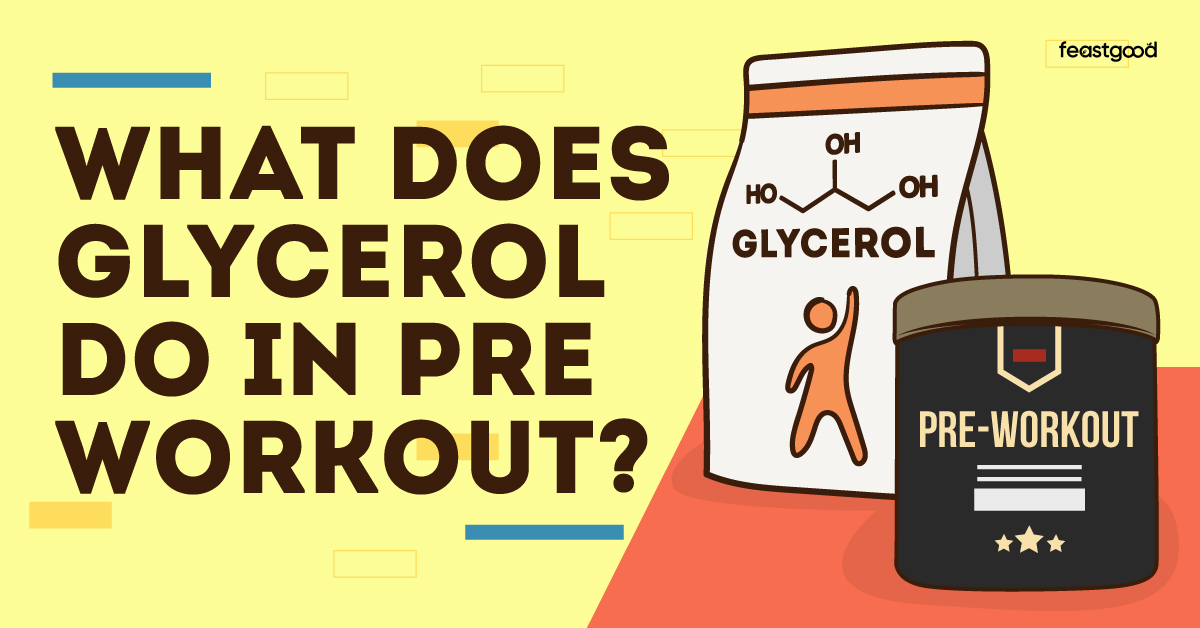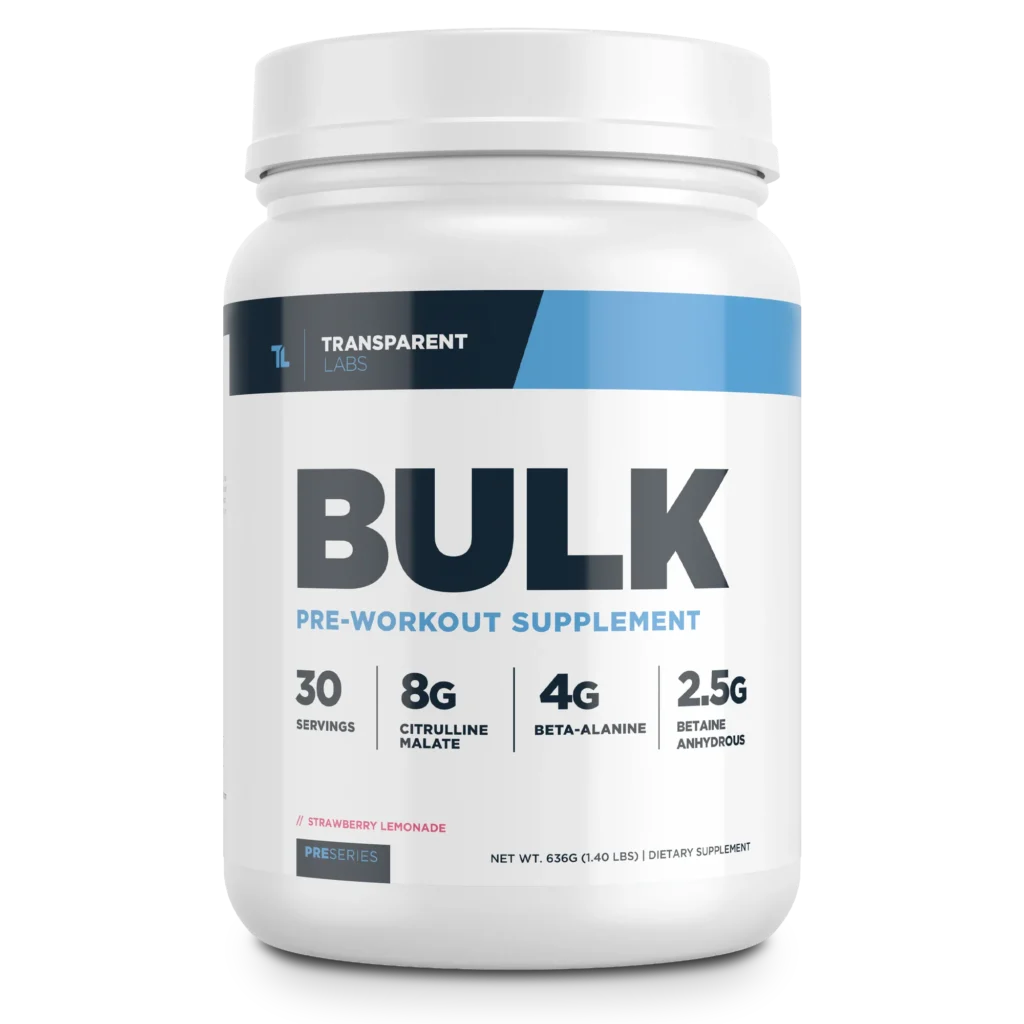Some links in this article are affiliate links, which means we earn from qualifying purchases. Learn more.
If you’re shopping for pre-workout, you may have noticed glycerol listed as an ingredient and wondered about its benefits. As a dietitian, I’ll explain the various roles of glycerol and how to use it for maximum workout performance.
Key Takeaways
- When combined with fluids, glycerol balances water inside and outside cells and helps to maintain hydration.
- Glycerol supplementation is beneficial before and after endurance events or training in warm conditions, as it helps prevent dehydration and facilitates rehydration.
- Pairing glycerol with sodium may prove more effective than hydrating with water alone if your goal is to hyperhydrate (a practice used before a long run, race, or other long, hard effort).
What Is Glycerol?
Glycerol is a key component of triglycerides, a fat (lipid) present in our bodies that circulates in the bloodstream. When triglycerides break down, glycerol is released.
Glycerol is present in plant and animal foods, like soy, vegetable oils, and tallow, and it serves various purposes in processed foods and drinks, functioning as an additive (e.g., sweetener, thickening agent, preservative, and more).
Beyond food, glycerol is used to produce pharmaceutical products (e.g., toothpaste, soaps, syrups, lotions, etc.) and as a supplement to enhance athletic performance.
- Related Article: Explaining 27+ Pre-Workout Ingredients & What They Do
How Does Glycerol Work?
Glycerol is used to help maintain hydration in the body. It keeps the fluids you drink in your body for longer by binding to water.
Glycerol plays a role in the pressure of the body’s fluids by temporarily keeping the fluids in your body and expanding body fluid compartments. This function is called osmotic pressure and maintains the proper water balance inside and outside our cells.
Keeping fluid balance in check helps maintain athletic performance, especially when working out in hot conditions.
“Glycerol could, therefore, play a very important role in thermoregulation, resistance to high temperatures and endurance in physical activities”
– Suleyman Patlar, Journal of Human Kinetics
The Benefits Of Glycerol For Exercise Performance
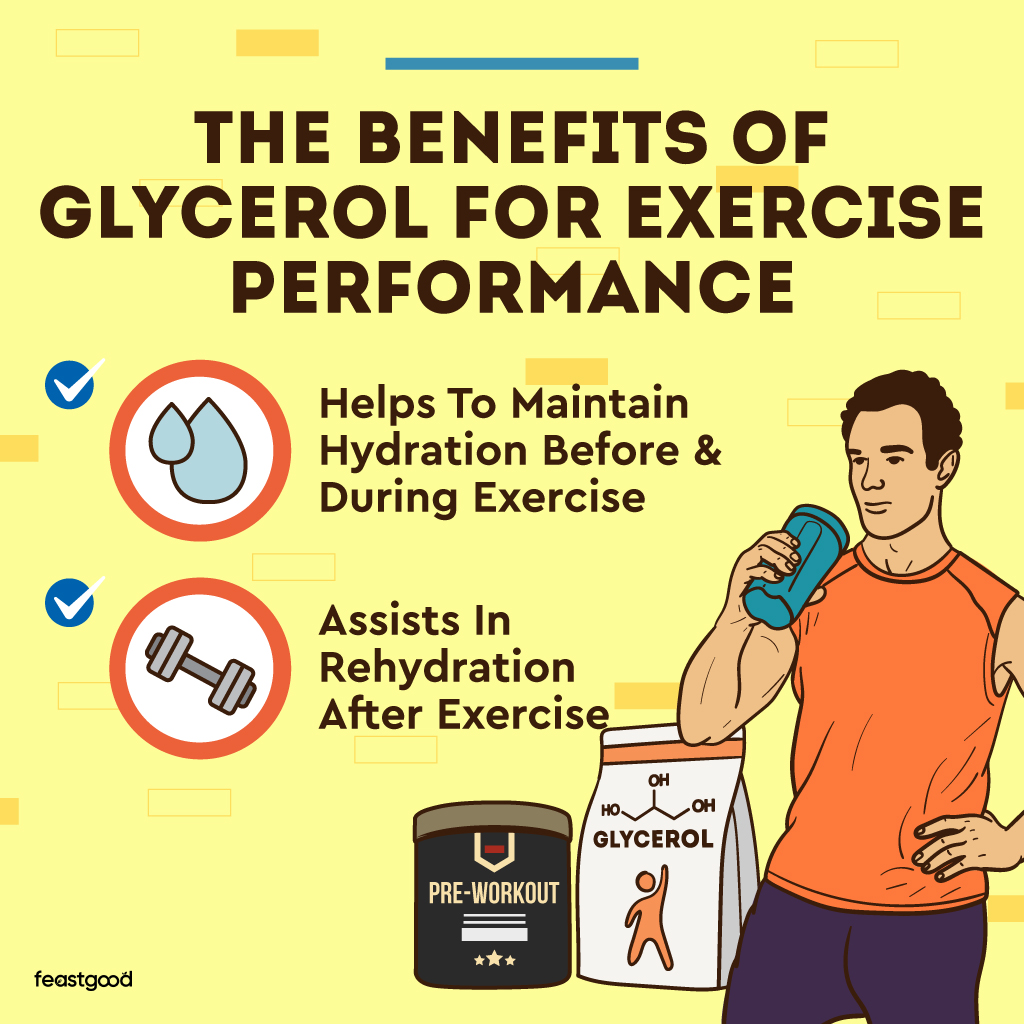
1. Glycerol Helps To Maintain Hydration Before & During Exercise
Research in endurance athletes shows that ingesting glycerol before exercise to hyperhydrate the body may help to limit dehydration during a workout, consequently improving athletic performance.
Even slight dehydration negatively impacts performance by reducing blood flow to the muscles, increasing body temperature, and depleting energy at a faster rate.
One meta-analysis of endurance exercise in hot conditions found that glycerol-induced hyperhydration was more effective in enhancing fluid retention than water-induced hyperhydration, resulting in a slight enhancement (3% power output) in exercise performance.
The mechanism behind this benefit is related to thermoregulation (increased sweat rate resulting in lower body temperatures) and cardiovascular responses (reduction in exercising heart rate).
2. Glycerol Assists In Rehydration After Exercise
Evidence around rehydration is less conclusive, but some research suggests hydrating with glycerol after intense exercise may be a convenient strategy to correct fluid and electrolyte losses.
Based on this research, we can hypothesize that hydrating with glycerol following exercise could accelerate fluid restoration in the body.
This hydration strategy would be advantageous when reaching complete fluid balance restoration following exercise is challenging.
For example, when time is limited or consuming meals/snacks/drinks is difficult or impossible after a long training session.
Are There Any Side Effects Of Glycerol In Pre Workout?
When adhering to recommended dosage protocols (1-1.4 grams per kilogram of body weight), glycerol is generally well-tolerated, and side effects are rare.
Although rare, some people have reported side effects after ingesting glycerol, such as nausea, stomach discomfort, headaches, and an increase in body mass, all of which may potentially impair performance in the training athlete.
Based on the available research, glycerol appears to be safe; however, additional research on glycerol is necessary to establish the effects of long-term usage in athletes and a safe upper limit.
How To Properly Use Glycerol In Your Pre Workout Routine
Glycerol is present in pre-workout supplements and can be purchased as a standalone ingredient.
As mentioned above, glycerol can be beneficial before and after exercise, so I’ll explain how to use it for each situation.
Pre-Exercise Glycerol Routine
For a simple and effective pre-workout glycerol routine to boost hydration, consider the following (according to the position statement of sports dietitians Australia):
- 1.2 – 1.4 grams of glycerol for every kilogram (0.54 – 0.64 grams per pound) of your body weight
- 25 ml of fluid for every kilogram of your body weight
- Have this as a drink around 90 to 180 minutes before your workout
For example, if you weigh 60 kilograms (132 pounds), that’s approximately 72 – 84 grams of glycerol dissolved in 1500 ml of fluid (water, a flavored drink, or a sports beverage).
This pre-workout routine is best for those engaging in prolonged endurance exercise or exercise in warmer environments. As this is quite a lot of fluid, you will need to sip on it rather than consume it quickly.
If you just want a small dose of glycerol in your pre-workout or during exercise to potentially delay dehydration for a shorter workout, a good guideline is to have 0.125 grams for every kilogram you weigh mixed in a volume of fluid equal to 5 milliliters for every kilogram you weigh.
So, if you weigh 60 kilograms (132 pounds), that’s about 7.5 grams (0.125 grams x 60 kg) dissolved in 300 milliliters (5 ml x 60 kg).
Post-Exercise Glycerol Routine
To rehydrate after exercise, the amount of fluid you need depends on how much you sweat.
- Drink about 150% of the weight you lost during your workout, determined by comparing body weight before and after exercise.
- To make rehydration even more effective (according to guidelines on glycerol use for rehydration), add 1 gram of glycerol for every kilogram (or 0.45 grams for every pound) of your body weight to each 1500 ml of fluid you drink.
For example, if you lose 1 kilogram after a long run, drink 1500 ml of fluid (150%). Then add the glycerol, so if your usual weight is 60 kilograms (132 pounds), add 60 grams to this drink.
Again, I suggest sipping this drink over 1 hour as it is a large quantity of fluid.
Pre-Workouts That Have A Clinical Dose of Glycerol
The science-backed recommended glycerol dose doesn’t match the usual amounts in pre-workout supplements.
Pre-workout formulas typically contain and recommend 1.5 – 3 grams of glycerol per serving, which may be enough for short workouts but likely is not enough if you’re gearing up for prolonged exercise in hot conditions.
Here are my top recommendations based on the intended use:
Prolonged Exercise: Glycerol Powder From Bulk Supplements
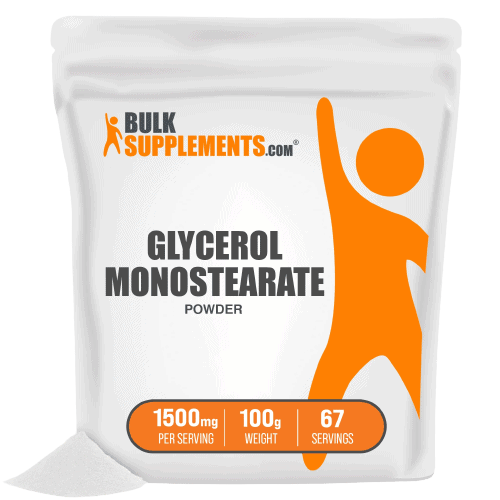
The best brand of glycerol for prolonged exercise or exercise in warm environments is Bulk Supplements Glycerol Powder, which offers 1.5g of glycerol per serving.
Since this is a single-ingredient supplement, you can add more than the suggested serving size and thus reach 1-1.4 grams /kg of body weight if you want to hyperhydrate/rehydrate.
Everyday Workout: Gorilla Mode Pre-Workout
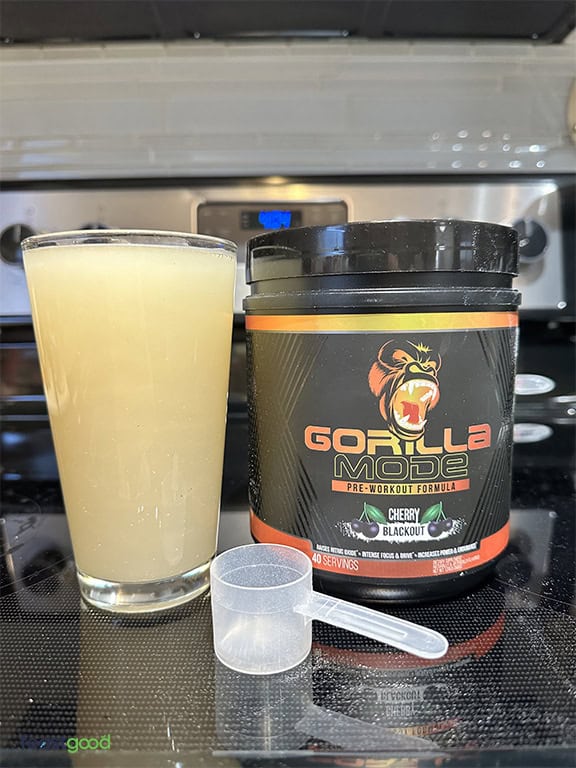
My favorite pre-workout formula for hydration for everyday workouts is the Gorilla Mode Pre-Workout, which contains 3g of glycerol per 2-scoop serving.
While this dose falls well below hyperhydration standards, it is enough to delay dehydration during shorter workouts (<1.5 hours).
- Read our Gorilla Mode Pre-Workout Review for more details on this product.
What Is Glycerol Usually Combined With?
Glycerol is frequently stacked with ingredients like beta-alanine, caffeine, and electrolytes because they are common ingredients in pre-workout formulas due to their performance-enhancing benefits.
One pairing that shows potential, especially for performance enhancement through hyperhydration, is with sodium (an electrolyte).
This experimental study compared fluid balance responses with sodium-induced hyperhydration, glycerol-induced hyperhydration, and water-induced hyperhydration and found that sodium-induced hydration was the best strategy for maintaining hydration.
As both sodium and glycerol are fluid retention boosters, combining them is likely the most effective hyperhydration strategy. That said, more research is required before we can form concrete conclusions.
What Are Natural Sources Of Glycerol?
Glycerol is naturally present in fat-containing foods such as soybeans, vegetable oils, and tallow. It is also commonly used as an additive and referred to as “glycerine” or “glycerin.”
That said, the precise amounts of glycerol in these foods are unclear.
Supplementation is likely the best option to achieve a clinically effective dosage meeting hyperhydration standards (1-1.4 grams per kilogram of body weight).
Frequently Asked Questions
Do You Have To Cycle Glycerol?
There’s insufficient evidence to determine whether glycerol is beneficial for consistent long-term use or if it needs to be cycled.
More research is needed to establish guidelines for glycerol usage patterns and assess the effectiveness of smaller dosages on performance.
Does Glycerol Expire?
Yes, glycerol can expire.
Check the expiration date on the packaging; if it’s past its due date, it has expired. Improper storage, exposure to air, and heat can impact shelf life. If you observe clumps, a foul odor, or mold, it’s advisable to discard it.
Can You Take Glycerol Everyday?
Taking glycerol daily is generally safe, provided you follow recommended dosage protocols.
However, using it for more extended periods requires further research to ensure its safety and effectiveness for long-term daily use.
Does Glycerol Make You Look Puffy?
You might experience feelings of bloating or notice weight gain due to water retention when using glycerol for hyperhydration goals.
However, the extent of visible fluid retention will vary based on your appearance, physiology, and the amount of fluid retained in the body.
Is Glycerol Legal For Athletes?
It is legal for athletes and can be used in high-performance sports.
Glycerol was previously on the World Anti-Doping Agency (WADA) Prohibited List but was formally removed in January 2018.
Learn About Other Supplements
References
Patlar S, Yalçin H, Boyali E. The effect of glycerol supplements on aerobic and anaerobic performance of athletes and sedentary subjects. J Hum Kinet. 2012 Oct;34:69-79. doi: 10.2478/v10078-012-0065-x. Epub 2012 Oct 23. PMID: 23487412; PMCID: PMC3590833.
Goulet ED, Aubertin-Leheudre M, Plante GE, Dionne IJ. A meta-analysis of the effects of glycerol-induced hyperhydration on fluid retention and endurance performance. Int J Sport Nutr Exerc Metab. 2007 Aug;17(4):391-410. doi: 10.1123/ijsnem.17.4.391. PMID: 17962713.
van Rosendal SP, Osborne MA, Fassett RG, Coombes JS. Physiological and performance effects of glycerol hyperhydration and rehydration. Nutr Rev. 2009 Dec;67(12):690-705. doi: 10.1111/j.1753-4887.2009.00254.x. PMID: 19941615.
van Rosendal SP, Osborne MA, Fassett RG, Coombes JS. Guidelines for glycerol use in hyperhydration and rehydration associated with exercise. Sports Med. 2010 Feb 1;40(2):113-29. doi: 10.2165/11530760-000000000-00000. PMID: 20092365.
McCubbin AJ, Allanson BA, Caldwell Odgers JN, Cort MM, Costa RJS, Cox GR, Crawshay ST, Desbrow B, Freney EG, Gaskell SK, Hughes D, Irwin C, Jay O, Lalor BJ, Ross MLR, Shaw G, Périard JD, Burke LM. Sports Dietitians Australia Position Statement: Nutrition for Exercise in Hot Environments. Int J Sport Nutr Exerc Metab. 2020 Jan 1;30(1):83-98. doi: 10.1123/ijsnem.2019-0300. PMID: 31891914.
American College of Sports Medicine; Sawka MN, Burke LM, Eichner ER, Maughan RJ, Montain SJ, Stachenfeld NS. American College of Sports Medicine position stand. Exercise and fluid replacement. Med Sci Sports Exerc. 2007 Feb;39(2):377-90. doi: 10.1249/mss.0b013e31802ca597. PMID: 17277604.
Savoie FA, Dion T, Asselin A, Goulet ED. Sodium-induced hyperhydration decreases urine output and improves fluid balance compared with glycerol- and water-induced hyperhydration. Appl Physiol Nutr Metab. 2015 Jan;40(1):51-8. doi: 10.1139/apnm-2014-0243. PMID: 25494972.
About The Author

Giulia Rossetto is a qualified Dietitian and Nutritionist. She holds a Masters in Human Nutrition (University of Sheffield, UK) and more recently graduated as a Dietitian (University of Malta). Giulia aims to translate evidence-based science to the public through teaching and writing content. She has worked 4+ years in clinical settings and has also published articles in academic journals. She is into running, swimming and weight lifting, and enjoys spending time in the mountains (she has a soft spot for hiking and skiing in the Italian Dolomites).
Why Trust Our Content

On Staff at FeastGood.com, we have Registered Dietitians, coaches with PhDs in Human Nutrition, and internationally ranked athletes who contribute to our editorial process. This includes research, writing, editing, fact-checking, and product testing/reviews. At a bare minimum, all authors must be certified nutrition coaches by either the National Academy of Sports Medicine, International Sport Sciences Association, or Precision Nutrition. Learn more about our team here.
Have a Question?
If you have any questions or feedback about what you’ve read, you can reach out to us at [email protected]. We respond to every email within 1 business day.
